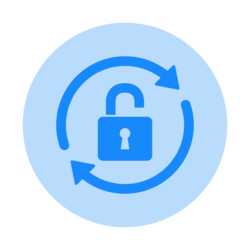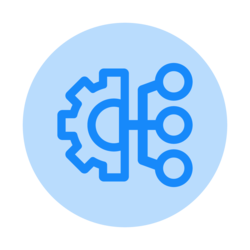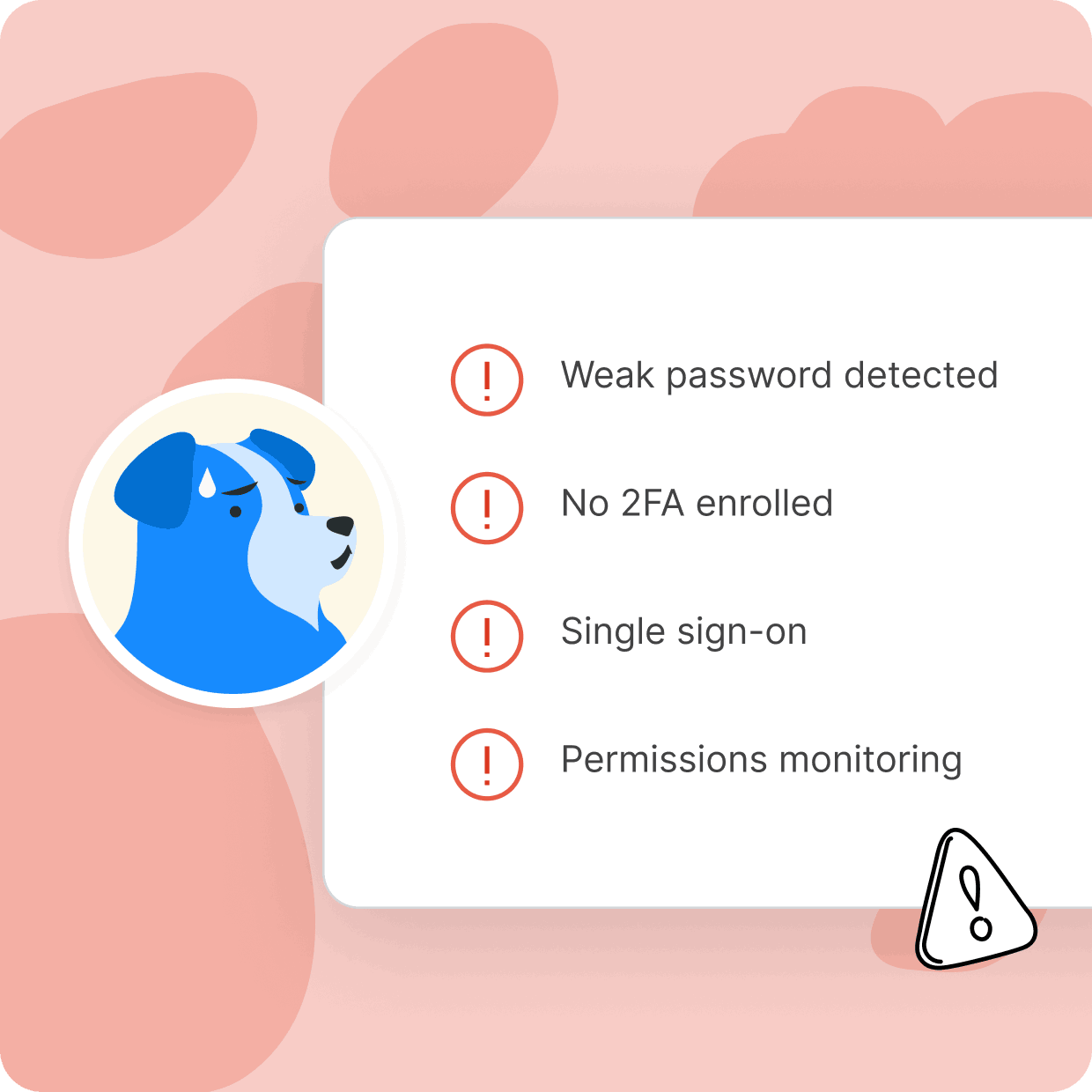Privilege access management (PAM) is a broad category of security tools that help manage access to sensitive accounts. Unfortunately, many applications don't support identity standards like the Security Assertion Markup Language (SAML) and the System for Cross-domain Identity Management (SCIM) specification. Without native support for these standards, applications either can't work with many PAM solutions or require expensive integrations.
Cerby allows you to manage all your SaaS administrator accounts, rotate credentials, and monitor and audit privileged account activities. In this guide, you'll learn about different PAM tools, the challenges, and the players.
Secure Privileged Accounts
Not all accounts are created equal. Some come with administrative permissions that put sensitive data at risk when in the wrong hands. With Cerby, you can help protect your business from bad actors, mistakes, and data breaches.
With Cerby You Can

Secure your SaaS admin accounts

Protect your business from data breaches

Eliminate the costs of custom integrations
Privileged Access Management Tools
As the world steadily grows ever more digitized, cybersecurity has emerged as one of the most critical concerns for business organizations, especially as cyber-attacks continue to evolve in complexity and increase in frequency. One of the most significant vulnerabilities many organizations face is the threat of privileged account misuse. In an effort to address this risk, privileged access management tools (PAM) have become an invaluable component of most contemporary cybersecurity strategies.
Generally speaking, PAM refers to a set of technologies and policies that allow organizations to manage and secure privileged accounts and access rights throughout the entire company. In most organizations, privileged accounts and access rights are granted to employees who need certain permissions and access to information in order to perform their job duties. However, these accounts and rights can be abused by malicious insiders or external attackers to gain unauthorized access to sensitive data and systems. PAM tools address these risks by providing a centralized platform for the management and security of all privileged accounts and access rights.
Recently, the significance of PAM tools has grown as cyber-attacks become more common, more sophisticated, and more targeted. Attackers are increasingly utilizing privileged accounts and access rights as a way to gain access to critical systems and data. Oftentimes, the consequences of a successful attack can be severe, resulting in financial losses, reputable damage, and potential legal liabilities. Because of this, PAM has become an essential aspect of most modern organizations’ cybersecurity initiatives.
As the sophistication and prevalence of cyber-attacks continue to increase, managing and securing privileged accounts and access rights is now essential for businesses to protect their sensitive data and systems. In this article, we will answer the question, “What is PAM?”, provide additional information about its increasing significance in the current cybersecurity landscape, and discuss some common PAM tool examples.
PAM Solution
As cyber threats continue to evolve, PAM solutions have become a vital part of many companies' cybersecurity strategies. The best PAM solutions available in the market can provide a wide array of features and capabilities to help system administrators manage privileged access and secure sensitive data and systems. Some of the top privileged access management vendors include Okta PAM, Sailpoint PAM, CyberArk PAM, and Cerby.
Okta is a cloud-based PAM solution that provides secure access to privileged accounts and critical systems. It offers centralized management of access and password policies, in addition to privileged access. With Okta, organizations can control and monitor privileged access across hybrid environments, including on-premise, cloud, and even mobile.
Sailpoint is another popular PAM solution that provides centralized management of privileged accounts, passwords, and access rights. Sailpoint allows organizations to detect and prevent unauthorized access to sensitive data and systems, including those hosted remotely in cloud environments. Sailpoint also offers a wide range of features, including session recording, access control, and audit trails.
Similarly, CyberArk PAM provides a comprehensive set of capabilities for securing privileged accounts and access. CyberArk offers secure password management, access control, session monitoring, and robust cyber threat detection. And because CyberArk is highly scalable and can be deployed across hybrid environments, it can be an ideal solution for larger organizations and enterprises with complex IT infrastructures.
Cerby is a new PAM solution that stands out in the market for its innovative approach to privileged access management. Cerby offers a unique, user-centric approach that empowers users to manage their own privileged access. With Cerby, users can easily request, approve, and manage their own access to critical systems and data, all while reducing the burden on IT teams and infrastructure.
Privileged Access Management Best Practices
Effective PAM is an absolute must-have for any modern organization that wants to adequately protect sensitive data and systems from the threat of cybercrime. According to the Ponemon Institute research, organizations are not able to reduce the cybersecurity risks caused by shared accounts. In the research, 50% of respondents say their organizations’ access management strategy enables employees to share login credentials securely when required by the application.
To implement PAM tools effectively, organizations should follow privileged access management best practices and privileged access management standards, especially those set forth by the National Institute of Standards and Technology (NIST), to ensure complete compliance with industry guidelines and regulations.One of the privileged access management best practices NIST recommends is first to establish a privileged access management policy. This policy should outline the organization’s approach to managing privileged access and include basic guidelines for password management, access control, session monitoring, and other related activities. The policy should also be reviewed regularly and updated if necessary, in order to ensure the policy remains effective.
Another best practice for implementing PAM tools is to perform scheduled access reviews to ensure that only authorized personnel have access to certain privileged accounts and/or systems. Access reviews should be conducted at least annually, and any discrepancies or issues should be addressed immediately to preserve the integrity and security of sensitive data and systems.
Organizations can also implement privileged access management standards, such as the ISO/IEC 27001 standard for information security management systems. This standard provides a helpful framework for implementing PAM controls and includes various requirements related to access control, password management, and session monitoring.
In addition to following best practices and standards, modern organizations must also comply with regulations that specifically mandate the use of PAM tools. For instance, the Payment Card Industry Data Security Standard (PCI DSS) requires organizations that handle any form of payment card data to implement strict controls for managing privileged access.
Implementing PAM tools intelligently requires following privileged access management best practices and standards, establishing a sound privileged access management policy, and complying with local and industry regulations. By adhering to these guidelines and working with reputable, trusted PAM vendors, organizations can position themselves better to protect their sensitive data and systems from cyber threats.
Benefits Of Privileged Access
By broadly limiting access to privileged accounts and closely monitoring user activity, privileged access management software helps organizations prevent data breaches, cyberattacks, and other security incidents.
One of the primary benefits of privileged access management is that it allows organizations to comply with industry regulations and standards. For example, both the PCI DSS and General Data Protection Regulation (GDPR) require business organizations to implement controls for managing privileged access. By implementing privileged access management solutions, organizations can readily meet these compliance requirements, avoid costly fines and penalties, and significantly reduce the risk of a data breach.
Another benefit of privileged access management is that it greatly reduces the risk of insider threats. Employees and other personnel with privileged access can cause irreparable damage if they misuse their access rights or inadvertently expose sensitive information. PAM software helps organizations mitigate this risk by enforcing strong access controls and conscientiously monitoring user activity.
PAM solutions can even enhance operation efficiency by reducing the risk of service disruptions caused by cyber incidents. By limiting access to privileged accounts, organizations can prevent cybercriminals from exploiting system weaknesses or vulnerabilities and causing downtime.
Remote workforces also pose a unique challenge for privileged access management. With more employees working from home or off-site, it becomes much more challenging for organizations to monitor user activity and ensure that only authorized users can gain access to sensitive data and systems. PAM software gives organizations the tools to overcome these challenges by providing centralized access control and advanced monitoring capabilities.
By greatly reducing the risk of data breaches, insider threats, and general service disruptions, PAM software helps organizations protect their most sensitive assets. As emerging technologies and trends continue to advance rapidly and shape the cybersecurity landscape, businesses will likely continue to adopt privileged access management solutions in order to remain compliant, secure, and competitive.
PIM VS. PAM
Privileged access management (PAM) and privileged identity management (PIM) are closely related yet distinct digital security concepts. While both focus on securing privileged access to critical systems and/or data, they both necessitate different approaches and have different goals.
So, exactly how is PIM different from PAM? PAM refers to the processes and technologies that allow organizations to control and monitor access to privileged accounts. PAM solutions may help enforce policies and controls to restrict access to privileged accounts and monitor user activity to detect and prevent unauthorized access. PIM, on the other hand, is more concerned with managing and securing privileged identities. This can include creating, maintaining, and revoking privileged accounts and/or credentials, as well as enforcing strong authentication and access controls.
Microsoft offers both PAM and PIM solutions for their Azure Active Directory platform. Microsoft PAM enables organizations to control access to privileged digital resources in Azure, including role-based access control (RBAC) and just-in-time (JIT) access. Microsoft PIM, conversely, provides a centralized platform for the management and security of privileged identities across an organization’s entire IT infrastructure, including on-premises and cloud-based resources.
When comparing Microsoft PAM vs PIM, it’s important to understand that both solutions serve their own unique purpose, and together they can complement each other. By utilizing both solutions in tandem, organizations can achieve a comprehensive approach to privileged access management.
Both PIM and PAM are essential aspects of a robust privileged access management strategy. While they may have different focuses, approaches, and end goals, both are highly necessary for securing privileged access to critical systems and data.
